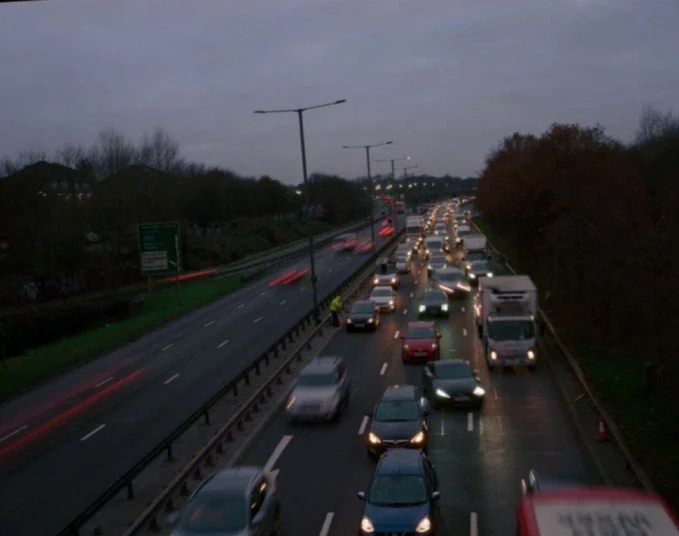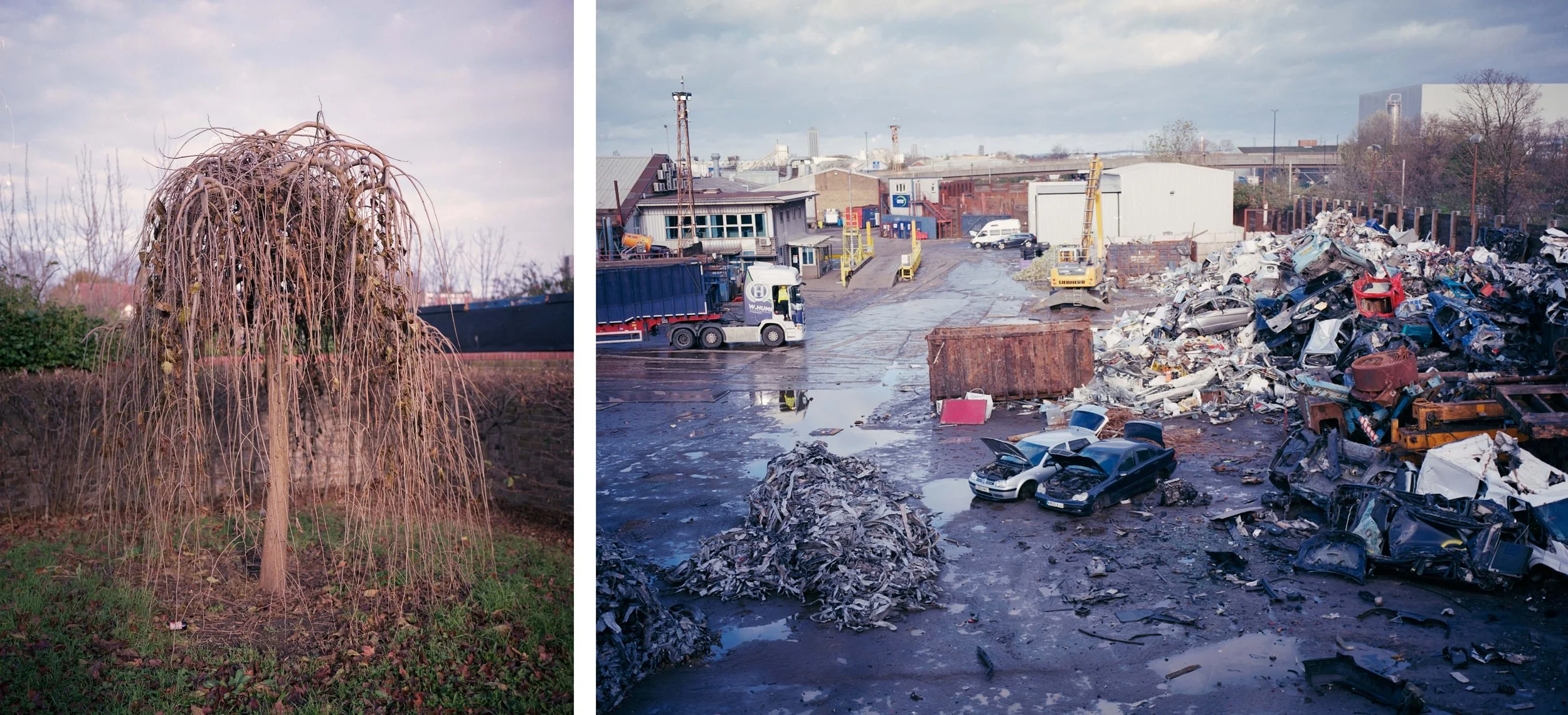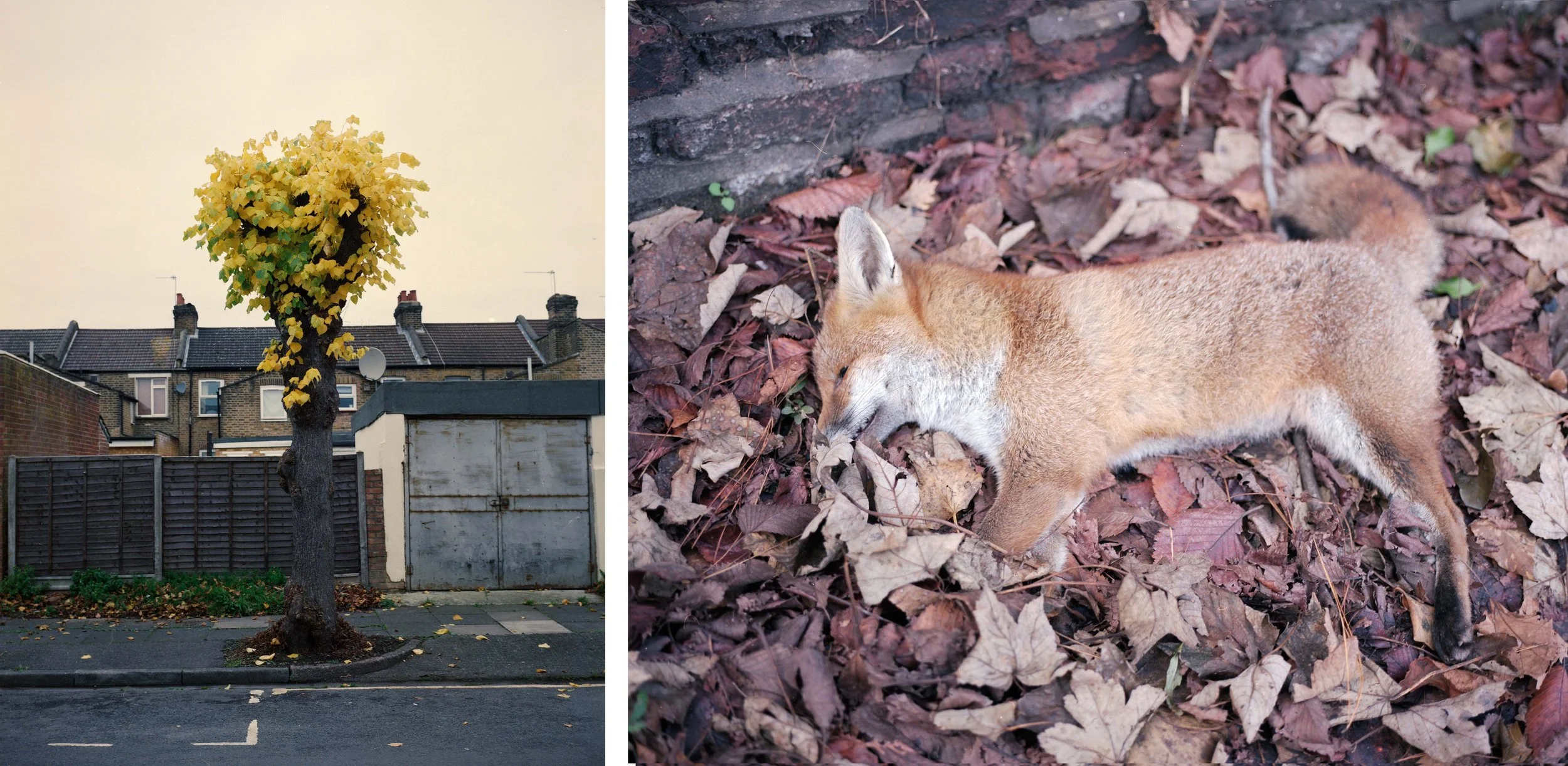London: Life in the North Circular

If ever a story were to be weaved from the polluted air that a Londoner breathes, there would be no better storytellers than the lorries and cars that frequent the roads and the humans and animals that inhale these vehicular emissions.
The North Circular, a ring road that circles Central London, is heavily frequented by trains, lorries, cars and animals; each with their own unique relation with the air around: the cars with their emissions and the animals with their inhalations. But what if we were to integrate these stories? This is what the photographer Jacob Middleburgh, a student at the London College of Communications (UAL), has concocted. Fabricating a story out of thin air, Jacob has synthesised the chattering of birds, the coughing of humans, the distant hum of train engines, the steady skidding of cars across the road, the blinking of lorry lights and the cawing of the crows into a musical rendition - a dismal anthem of the frequenters of the North Circular.
Alongside the photography and interview narrative, Jacob utilised pollution data sets from the North Circular and transposed it to musical form. We suggest you look and read whilst listening.
This choral rendition of the sounds of North circular is a musical peek into our times. Through his musical and pictorial documentation of the communities living in and around the North Circular, Jacob Middleburgh’s work acts as a smoked mirror whose foggy appearance is a reflection of the looming climate crisis . He centres his art around the largest incinerator in Europe which is being built on the roadside near Chingford, and the dangerously bad levels of air quality in the area.
Retail Park, Finchley
Most travellers on the North Circular road treat it as such- a road. However, a closer look reveals a slow settling smog resulting from the air that the residents breathe and one that silently chokes them. In 2013, Ella Addo-Kissi Debrham, a 9 year old girl who lived on the South Circular (South London’s version of the North Circular), died due to air pollution. It was the first such case in the UK in which the coroner noted pollution as a significant cause of death.
I met Keni on the North Circular in Totteham leaving her house. When I told her about my project, that I was looking at air pollution on the North Circular, she pointed to her window, covered in a thick layer of soot that had drifted upwards from the passing cars: ‘It’s always been like this’, she tells.
The North Circular, also commonly known as the A406, spans up to 27 miles and was built in 1930 to connect factory workers and industrial communities. Middleburgh’s photographs capture the dreary dullness of the post-industrial remnants; tatters of a legacy found here in a scrapyard in Chingford and there in a weeping willow in Neasden. Decades later, the legacy of urban decay that is a corollary of industrial prosperity, endures in some areas of North Circular: the largest incinerator in Europe is being built in Edmonton.
Weeping Willow, Neasden; Scrapyard, Chingford
A look into the areas surrounding North Circular reveal white windows that have been painted with thick soot from passing cars, stubbornly settled at the bottom; foxes lying dead on the pavement, perishing beside the humdrum rush of the evening traffic; a flowering tree standing 200 metres from an incinerator. Will the yellow flowers stand the test of time having been infiltrated by the pollutants the incinerator emits?
200 Meters From The Incinerator; Dead Fox, Hanger Lane
The incinerator is a graveyard of melting plastic and a loss of quality of life, both human and animal. Evidence suggests that air pollution in areas around Incinerators is lesser than Industrial areas. Still, the grim evidence suggested by an investigation by Unearthed is that waste incinerators are three times more likely to be built in poorer areas. It comes as little surprise that Edmonton Green, the location of the incinerator, is one of the poorest areas in the country. Given the North Circular does boast leafier, wealthier neighbourhoods, the choice of location for the incinerator cannot simply be viewed as mere coincidence.
But audible in the midst of these grey skies are the distinct growls and grumbles of approaching storms- the controversial project has received considerable backlash from the communities surrounding it. Amongst many other incitements, Ella’s death sparked a series of protests against rising levels of air pollution across the UK.
From the climate protest group ‘Extinction Rebellion’ blocking access to the incinerator site, to the ‘Stop the Edmonton Incinerator’ group asserting that local communities deserve better, the incinerator is a site of fire and fury. Protestors are of the belief that the incinerator should be replaced with state-of-art- recycling centres.
On paper, the government has achieved great bounds in terms of its steps towards tackling climate change. The ULEZ (Ultra Low Emission Zone) which stops just outside of the North Circular will contribute to a 71% reduction in air pollution by 2030. But while these policies reveal one side of the story, the other side of the story simply cannot be evaded. Growing evidence shows that the incinerators emit high levels of oxides of Nitrogen (NO2), the same gas that is cited as having a direct impact on Ella’s condition. If the smog ever clears on the North Circular, it will reveal the government’s contradictory stance on pollution: Pledging money for poorer countries in COP 26s while choosing less leafy neighbourhoods in its own capital to burn plastic.
As the cry of picket sign protestors is drowned out by the humming of lorry tyres , as the rumbling engine of underground trains overpowers the cawing of crows, a humble acceptance sinks in: this musical cacophony of birds, trains, lorries, machines and, people comes as a comfort to some.
I met Lee besides a discontinued gas tank in the borough of Newham. He doesn’t live on the North Circular, but spends his days in a field that sits beneath its bridge.
With the climate crisis reaching alarming levels, Lee’s resignation to the dismal anthem of the North Circular should not be seen as a sign of surrender. Because Lee communicates this discovery of his unusual serenity while casually standing beside a disused gas tank. “There is a certain peace that comes with the sounds of the North Circular, a white noise that can be calming.” And if we were to derive meaning from Lee’s casual resignation, it is a sense of hope. A hope that is derived from climate change activists fighting for greener waste disposal methods and of artists revealing the effects of climate change through their work; a hope derived from small acts of dissent. The fog will clear on the North Circular.
Photography by Jacob Middleburgh
Words by Shreya Soni





